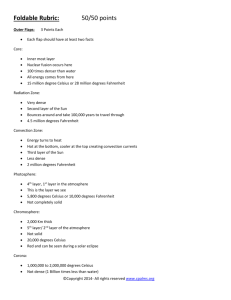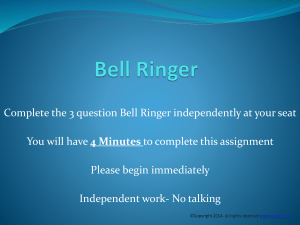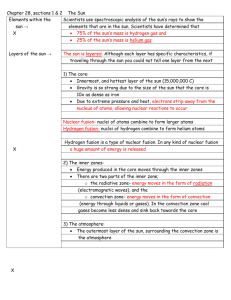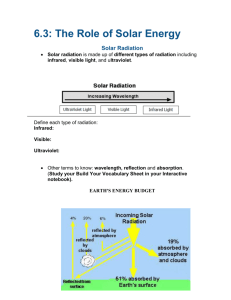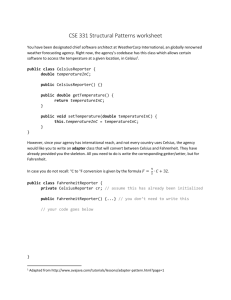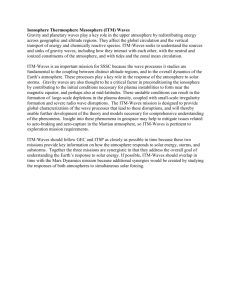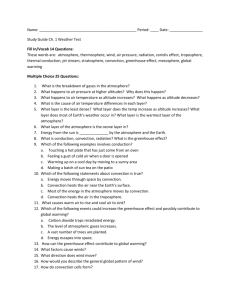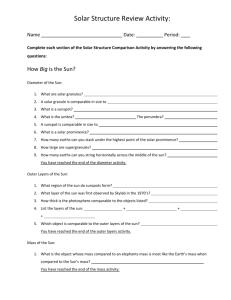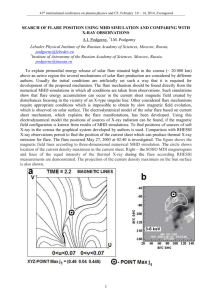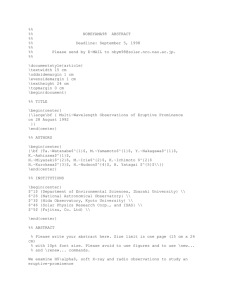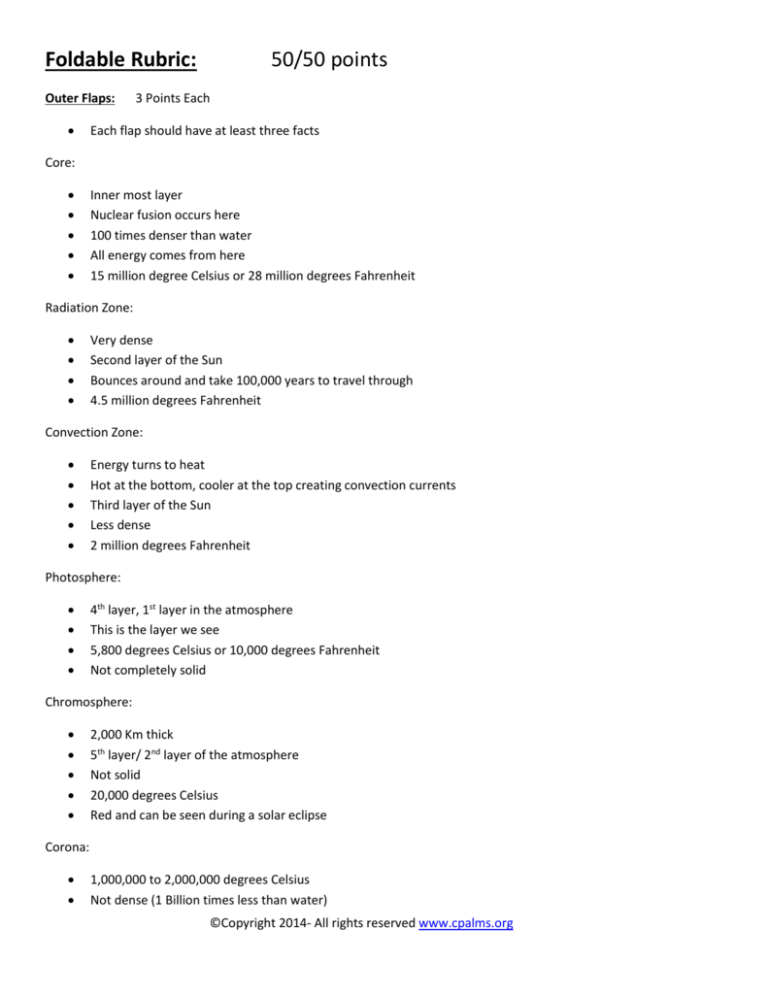
Foldable Rubric:
Outer Flaps:
50/50 points
3 Points Each
Each flap should have at least three facts
Core:
Inner most layer
Nuclear fusion occurs here
100 times denser than water
All energy comes from here
15 million degree Celsius or 28 million degrees Fahrenheit
Radiation Zone:
Very dense
Second layer of the Sun
Bounces around and take 100,000 years to travel through
4.5 million degrees Fahrenheit
Convection Zone:
Energy turns to heat
Hot at the bottom, cooler at the top creating convection currents
Third layer of the Sun
Less dense
2 million degrees Fahrenheit
Photosphere:
4th layer, 1st layer in the atmosphere
This is the layer we see
5,800 degrees Celsius or 10,000 degrees Fahrenheit
Not completely solid
Chromosphere:
2,000 Km thick
5th layer/ 2nd layer of the atmosphere
Not solid
20,000 degrees Celsius
Red and can be seen during a solar eclipse
Corona:
1,000,000 to 2,000,000 degrees Celsius
Not dense (1 Billion times less than water)
©Copyright 2014- All rights reserved www.cpalms.org
Hottest layer of the Sun’s atmosphere
Goes from 10,000km to 25,000km away from the Sun’s surface
Diagram of the Sun:
9 Points- 1 Point Each
Use the following pictures to make sure all things are labeled
o Remember that a flare should go straight out and a prominence should loop
1 Point for each label and/or drawing
o Core
o Radiation Zone
o Convection Zone
o Photosphere
o Chromosphere
o Corona
o Sunspot
o Solar Flare
o Prominence
Three Features:
3 Points Each
Sunspot:
Cool spots on the Sun’s surface
Appear darker then surrounding areas
Come in 11 year cycles
Due to convection currents underneath and can be anywhere on the surface
Solar Flare:
Explosive release of energy at the Sun’s surface
Goes directly outward from Sun
Creates Solar wind
Releases tons of radiation
Prominence:
Explosive release of energy at the Sun’s surface
Gets pulled back into the Sun and creates a loop of gas
Huge (Even Earth could fit through the loops)
©Copyright 2014- All rights reserved www.cpalms.org
Critical Thinking Questions:
14 Points- Values next to each below
1. What would happen to temperature on Mercury during the day if a sunspot was directly in line with its
surface? (5 Points)
Students will need to show that they understand that the temperature at this place in the Sun is
reduced. Therefore, Mercury would see a decrease in average temperature because it us
receiving less heat and rays from the Sun from that particular place
You may see higher level thinking students discuss the fact that Mercury has no atmosphere so
this would create a dramatic difference in the temperature because it is directly affected by the
sun due to its lack of atmospheric protection
2. How would a photon's travel (physical path) differ as it traveled through the different layers of the Sun?
(5 Points)
Students should discuss the nuclear fusion from the Core, how dense the core is and how
molecules may get stuck there due to this, the density of the radiation zone and how it takes
100,000 years sometimes for atoms to be released, the convection and circular motion in the
convection zone and then finally being released into the atmosphere.
You may see higher level thinking students then discuss the temperature changes in the
atmosphere and/or if the molecule is then part one of the features of the Sun how that would
effect it.
3. What is the difference between a solar flare and a prominence? Give a written explanation AND draw a
diagram of each. (4 Points)
Students should discuss how one goes directly out (Solar flare) and one is pulled back into the
Sun to create a huge loop of gas (Prominence).
See above for pictures of each.
©Copyright 2014- All rights reserved www.cpalms.org

